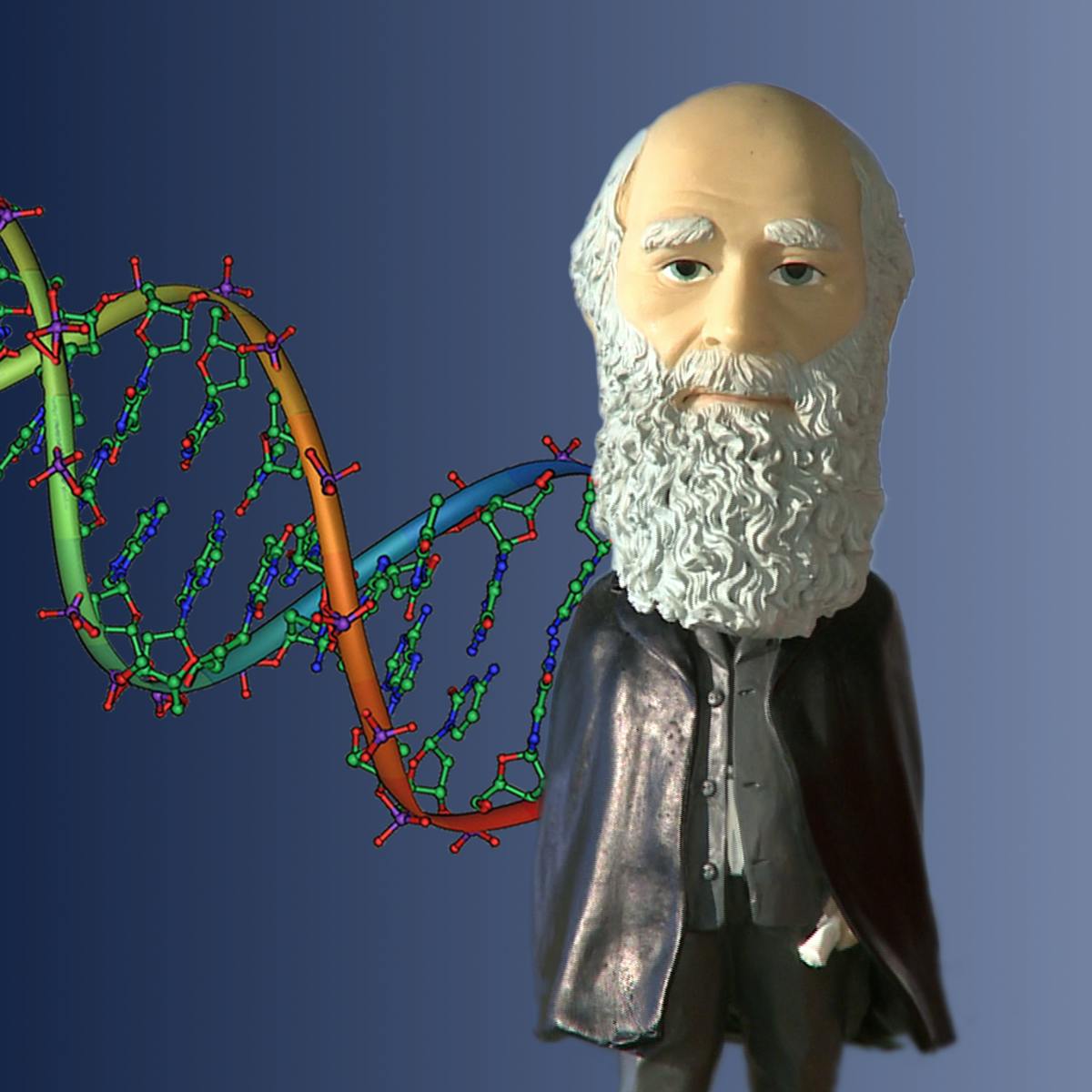Genetics is a field of biology that studies how traits are passed from parents to their offspring. The passing of traits from parents to offspring is known as heredity, therefore, genetics is the study of heredity. This introduction to genetics takes you through the basic components of genetics such as DNA, genes, chromosomes and genetic inheritance.
- Introduction To Genetics Worksheet Answers
- Introduction To Genetics Notes
- Introduction To Genetics Workbook Answers
- Introduction To Genetics Section 9-2 Answers
Genetics is built around molecules called DNA. DNA molecules hold all the genetic information for an organism. It provides cells with the information they need to perform tasks that allow an organism to grow, survive and reproduce. A gene is one particular section of a DNA molecule that tells a cell to perform one specific task.
- This 47 slide power point is a detailed introduction to Genetics and Gregor Mendel's work. Students will be introduced to heredity, chromosomes and genes. Engaging animations and eye catching photos will keep their attention. Extra animations are included at the end of the power point if you would.
- Chapter 11 Introduction to Genetics Section 11–1 The Work of Gregor Mendel(pages 263–266) This section describes how Gregor Mendel studied the inheritance of traits in garden peas and what his conclusions were. Introduction (page 263) 1. The scientific study of heredity is called. Gregor Mendel’s Peas(pages 263–264) 2.
About Press Copyright Contact us Creators Advertise Developers Terms Privacy Policy & Safety How YouTube works Test new features Press Copyright Contact us Creators. Worksheet September 01, 2019 03:28 Chapter 11 Introduction to Genetics Worksheet Answers – Y-chromosome tests are used increasingly more recently to determine DNA Genealogy. Everything has to be sterile in the microbiology lab and every procedure has to be accomplished skeptically. Chapter 11 Introduction to Genetics Section 11–1 The Work of Gregor Mendel(pages 263–266) This section describes how Gregor Mendel studied the inheritance of traits in garden peas and what his conclusions were. Introduction (page 263) 1. The scientific study of heredity is called. Gregor Mendel’s Peas(pages 263–264) 2.
Heredity is what makes children look like their parents. During reproduction, DNA is replicated and passed from a parent to their offspring. This inheritance of genetic material by offspring influences the appearance and behavior of the offspring. The environment that an organism lives in can also influence how genes are expressed.
DNA
DNA is the cornerstone of genetics and is the perfect place to start for an introduction to genetics. DNA stands for deoxyribonucleic acid and it is the molecule that holds the genetic information for a cell and an organism.
A DNA molecule contains a code that can be used by a cell to express certain genes. Specific sections of a DNA molecule provides the information to build specific proteins which can then be used by a cell to express the desired gene.
A DNA molecule is a nucleic acid, one of the four molecules of life. It comes in the form of a long, linear molecule referred to as a strand. Each strand of DNA is bonded to a second strand of DNA to form a DNA double helix. In eukaryotic cells, DNA is found in the nucleus as a tightly coiled double helix.
DNA molecules are replicated during cell division. When a cell divides, the two new cells contain all the same DNA that the original cell had.

In sexual reproduction with two parents, half of the DNA of the offspring is provided by each of the parents. The genetic material of a child is made from 50% of their mother’s DNA and 50% their father’s DNA.
Genes
A gene is a specific segment of a DNA molecule that holds the information for one specific protein. DNA molecules have a unique code for each gene which codes for their specific protein. Some organisms can have more than 100,000 different genes so they will have 100,000 unique sequences of DNA ‘code’.
Genes are the basic unit of heredity. The genes of an individual are determined by their parent or parents. A bacteria that is born by one parent cell splitting into two cells and has the exact same genes as their one parent cell.
A human, on the other hand, has two copies of each gene – one set from their mother and a second set from their father. Different forms of the same gene are called alleles. For each gene, a human can have two different alleles or two of the same alleles – one from each parent.
Physical traits such as eye color or height are often determined by the combination of multiple genes. The environment an individual lives in also impacts how genes are expressed.
Chromosomes
A chromosome is a structure made from tightly packed strands of DNA and proteins called histones. Strands of DNA are tightly wrapped around the histone proteins and form into long worm-shaped structures called ‘chromatids’. Two chromatids join together to form a chromosome.
Chromosomes are formed in the nucleus of a cell when a cell is dividing. It is possible to see chromosomes under an ordinary light microscope if the cell is in the right stage of cell division.
The number of chromosomes varies between species. Humans have 46 chromosomes. Some species can have many more than 100 chromosomes while others can have as little as two.
Genetic inheritance
Introduction To Genetics Worksheet Answers
Inheritance is the backbone of genetics and is an important topic to cover in an introduction to genetics. Long before DNA had been discovered and the word ‘genetics’ had been invented, people were studying the inheritance of traits from one generation to the next.
Genetic inheritance occurs both in sexual reproduction and asexual reproduction. In sexual reproduction, two organisms contribute DNA to produce a new organism. In asexual reproduction, one organism provides all the DNA and produces a clone of themselves. In either, genetic material is passed from one generation to the next.
Introduction To Genetics Notes
Experiments performed by a monk named Gregor Mendel provided the foundations of our current understanding of how genetic material is passed from parents to their offspring.
 Video by Frank Gregorio. To see more brilliant videos like this one, check out Greg’s vimeo channel
Video by Frank Gregorio. To see more brilliant videos like this one, check out Greg’s vimeo channelLast edited: 31 August 2020
Want to learn more?
Visit these pages on our website:
Genetics | DNA replication | Genetic Inheritance | Transcription & translation
This is world’s #1 textbook for beginning biologists and has been hugely valuable to me over the years. This is the resource that I recommend above anything else for aspiring biologists.
The latest edition is available from Amazon and the Book Depository.
FREE 6-Week Course
Introduction To Genetics Workbook Answers
Enter your details to get access to our FREE 6-week introduction to biology email course.

Learn about animals, plants, evolution, the tree of life, ecology, cells, genetics, fields of biology and more.
Displaying top 8 worksheets found for - Introduction To Genetics Cloze Answer.
Some of the worksheets for this concept are Chapter 11 introduction genetics answer key, Introduction to genetics test answer key, Introduction to genetics cloze work, Introduction to genetics answer, Ch 11 introduction to genetics work, Ch 11 introduction to genetics work, Ch 11 introduction to genetics work, Introduction to genetics answer.
Found worksheet you are looking for? To download/print, click on pop-out icon or print icon to worksheet to print or download. Worksheet will open in a new window. You can & download or print using the browser document reader options.
Chapter 11 Introduction Genetics Answer Key
Introduction To Genetics Test Answer Key
Introduction to Genetics Cloze Worksheet

Introduction To Genetics Section 9-2 Answers
Introduction To Genetics Answer -
Ch 11 Introduction To Genetics Worksheet
Ch 11 Introduction To Genetics Worksheet
Ch 11 Introduction To Genetics Worksheet
Introduction To Genetics Answer

Comments are closed.